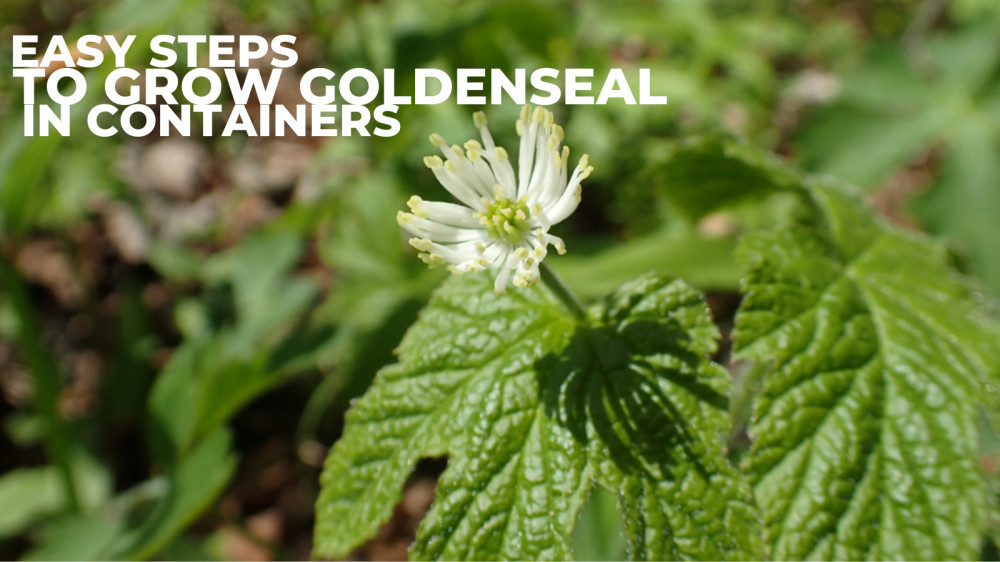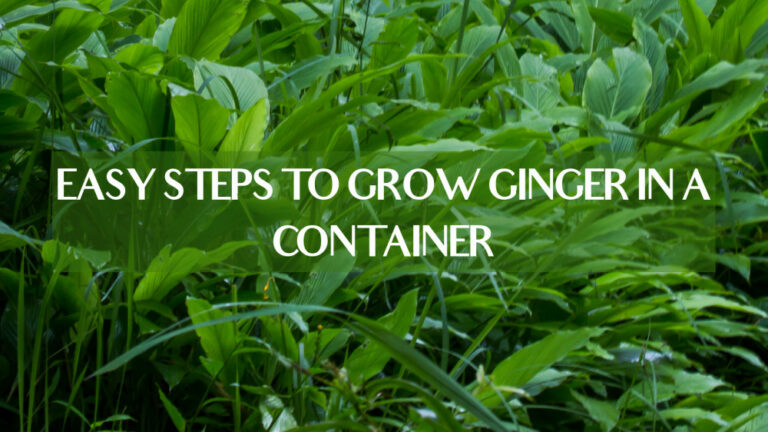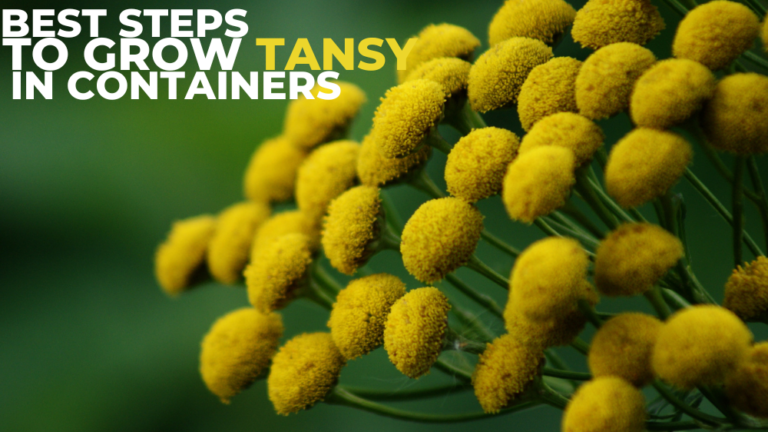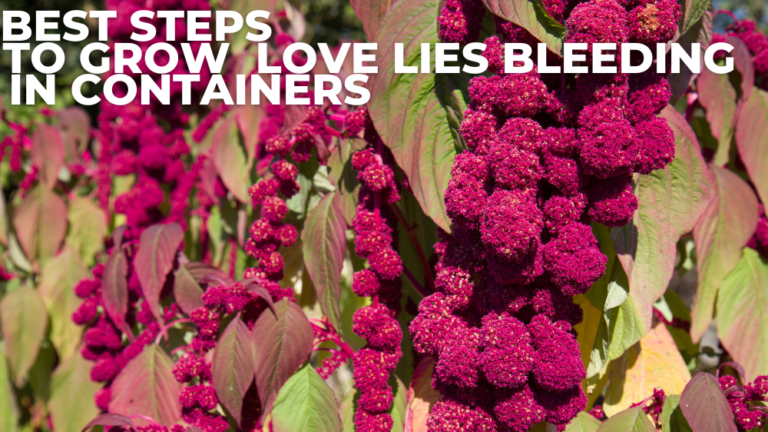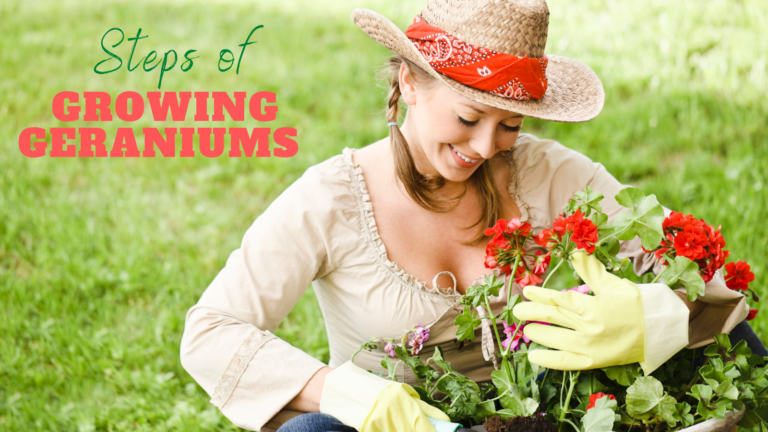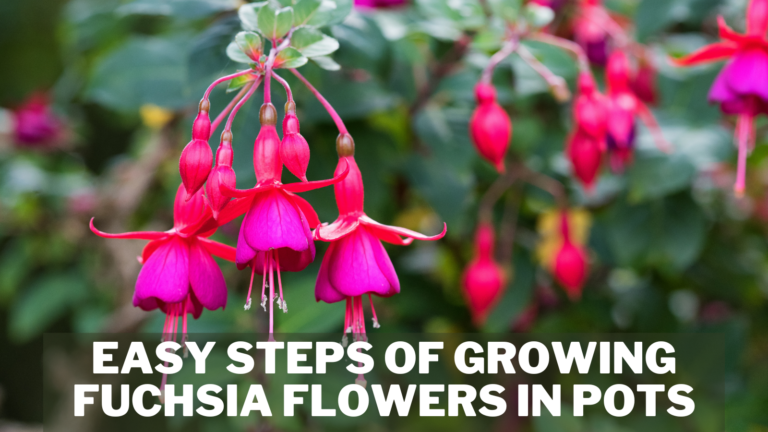Easy Steps To Grow Goldenseal In Containers
Easy Steps To Grow Goldenseal In Containers
Goldenseal (Hydrastis Canadensis), a native of the eastern woodlands of the United States, thrives in moist, partly shaded environments between USDA plant hardiness zones 3 and 8. Goldenseal, though uncommon when grown, gives shady garden beds visual interest with its frilly white flowers and red berries.
One of the easiest ways to grow new goldenseal plants is through root division, which only needs a small amount of time and a handful of tools.
However, it can only be done in the autumn because the cool, wet weather will encourage the plants to establish new roots without putting them under undue stress. The blog will assist you in growing goldenseal in containers properly.
Health Benefits of Goldenseal
1. Aims To Reduce Virus Outbreaks
Herbalists have long used goldenseal in combination with echinacea, myrrh, and St. John's Wort to treat the symptoms of herpes outbreaks. They contend that goldenseal promotes faster herpes healing. However, medical or scientific studies have not yet established proof of this.
2. Support Bacterial Diarrhea
Goldenseal has been shown in studies to be effective in treating bacterial diarrhea and gastritis due to its general antimicrobial properties.
According to a review of several studies involving over 3,900 participants, participants who received berberine and antibiotics for infectious diarrhea fared better than those who received only antibiotics.
Additionally, hospital stays for diarrhea were reduced when only berberine was administered. This study also revealed that using berberine in this way had no significant adverse effects. To demonstrate its efficacy and safety, more research is necessary.
3. Control Blood Sugar
Type 2 diabetics may benefit from taking goldenseal. One of the primary components of goldenseal, berberine, may lower insulin resistance, increase insulin secretion, and reduce gut sugar absorption, according to studies. These effects may all work together to lower blood sugar levels.
Research has also shown that berberine's blood sugar-lowering effects may be comparable to the common diabetes drug metformin.
According to additional research, berberine and blood sugar-lowering drugs appear to work better together than they do separately.
Although berberine's health advantages seem promising, it's unclear whether goldenseal contains enough berberine to have those effects. More research on goldenseal is therefore required.
4. Immune Support
Berberine and hydrastine, two of the alkaloids found in goldenseal, appear to promote immune function. They are antimicrobial because they eradicate bacteria and might even inhibit the development of tumours.
These substances may also lessen inflammation, which explains how they might aid in treating sore throat, digestive discomfort, and cold-related symptoms. However, more research is required to determine how it functions and the best application and dosage for the most efficient immune support.
5. Good For Eczema And Acne
Goldenseal and other berberine-rich plants may be suitable for your skin.
Older test-tube studies suggest that the main active ingredient in goldenseal, berberine, may help combat the acne-causing P. acnes bacterium.
Additionally, studies indicate that berberine's anti-inflammatory properties may aid in treating inflammatory skin conditions like psoriasis.
However, there hasn't been much research done on this subject that is focused on goldenseal. Consequently, more research is required.
6. Good For Oral Health
Goldenseal may offer protection against tooth infections in terms of oral health.
According to one study, goldenseal and other herbs in a herbal mouthwash may have slowed the development of the bacteria that cause dental plaque and gingivitis, a mild form of gum disease.
According to a different study, using goldenseal toothpaste or mouthwash may help reduce gum inflammation.
Due to the lack of available data, more research is still required to support these alleged goldenseal benefits for oral health.
History Of Goldenseal
Goldenseal has long been harvested for its rhizome's therapeutic properties, with the first use by European settlers recorded in 1769. Goldenseal has long been used as a topical treatment for cuts, sores, ulcerations, and infections, as well as a stomachic, sore throat gargle, eye wash, and strengthening tonic.
Goldenseal was included on Appendix II of the Convention on the International Trade of Endangered Species (CITES) in 1997 due to noted declines in the abundance of wild populations, primarily caused by habitat loss and overharvesting.
Goldenseal is a CITES-restricted species, so the U.S. Fish and Wildlife Service keeps an eye on all exports from the country to make sure that the species' harvest and trade are sustainable.
Conservationists have suggested that a moratorium on the harvest and sale of wild goldenseal be put in place in response to ongoing population declines to help safeguard the viability of remaining populations.
Similarly, industry participants have started researching and developing sustainable harvesting, management, and cultivation guidelines to ensure the species' long-term survival.
Grow Goldenseal In Containers
Select The Best Site
Typically, goldenseal grows on north, northeast, and east-facing slopes beneath an established forest canopy that offers between 60 and 80 percent shade. Goldenseal can tolerate as little as 45 percent shade at higher elevations (above 3,400 ft) and maintain satisfactory growth, according to growers.
Goldenseal prefers locations with well-drained soils rich in organic matter and maintains a slightly acidic soil pH (5.5–6.5) within these general environmental parameters. As was previously mentioned, finding appropriate growing sites can also be done by looking for specific companion plants and other indicator species.
According to Burkhart and Jacobson (2006), species like tulip poplar, sugar maple, basswood, black walnut, red oak, slippery elm, white ash, trillium, black cohosh, ginseng, mayapple, and bloodroot are frequently observed growing alongside goldenseal.
Soil Requirements
Gather soil samples for nematode assays and fertility testing several months before planting. The crop will need to be labelled as “native ornamentals” for most soil testing labs. If soil tests show that the intended site has low levels of organic matter, add compost to the soil to raise it.
Goldenseal produced the highest root yield in a study on forest soil in western North Carolina when grown in soil amended with 2.7 to 5.2 tons of lime/acre, resulting in a pH of 5.5 to 6.0.
In the same study, plant survival and root yields decreased as the nitrogen (supplied as ammonium nitrate) rate increased. Superphosphate was added, but neither plant growth nor survival was impacted.
Based on these findings and grower observations, goldenseal should only receive a small amount of fertilization, preferably from an organic source, in soil with a high organic matter content. In sandier soils, more will be needed. Every spring as growth begins, a balanced fertilizer can be applied in all cases at a low rate.
Some people claim that high applications of calcium in the form of gypsum result in positive growth responses. However, findings from research at the Mountain Horticultural Crops Research Station on the effect of gypsum on goldenseal did not corroborate these findings.
In our research, plants grown in soil with no additional calcium showed reduced leaf number and size, increased disease incidence, and earlier dieback than plants grown in soil with gypsum applied at 2000 to 5000 lb of calcium per acre.
Propagation From Seeds
Simply plant 12″–34″ deep seeds in a nursery bed or shallow planting furrow after collecting or stratifying them, and then cover them again with soil and 1”–2” of leaf litter.
The wild-simulated technique involves broadcasting seeds on the soil's surface (5-7 seeds per sq. ft.), which are then covered with leaf litter. After two years of growth, seedlings grown in a nursery bed should be moved to a permanent location.
Propagation from Rhizome Cuttings: The most popular method for growing goldenseal is dividing mature rhizomes into smaller rootlets planted elsewhere. As shown in figure 5, mature rhizomes should be cut into between 12″ and 1″ long pieces.
Each cutting should have fibrous solid roots and, if possible, a dormant bud. Numerous dormant buds are typically present on rhizomes and fibrous roots, some of which may be invisible to the unaided eye. If a rootlet doesn't have a visible bud, one might appear after the rootlet is planted.
Propagation From Fibrous Root Cuttings
Goldenseal can be multiplied using pieces of the fibrous root system and whole rhizome cuttings. This propagation method imitates the natural capacity of goldenseal to reproduce from root fragments severed during harvesting.
The small, dormant bud scales that cover the fibrous roots frequently grow prominently along the length of the rhizome, have the potential to grow into new plants and root systems given enough time.
Simply cut the fibrous root material into 12″- 1″ pieces and plant them 12″- 1″ deep in a nursery bed to propagate new rootlets. It could take up to two years for plants to fully emerge due to the propagule's small size and the lack of developed buds.
Mulching
Mulching is necessary to protect goldenseal during the winter, retain soil moisture, control weed growth, and moderate temperatures. When planting, the mulch layer should be several inches thick. Mulch may need to be replaced every year or two, depending on the type. Before the plants emerge in the spring, the mulch needs to be raked back to a depth of between one and two inches.
Common mulching materials for goldenseal include whole or chopped leaves, hardwood bark chips, hardwood bark and sawdust, or straw. Although straw is successfully used in many parts of the country, straw performed poorly in studies at two locations in North Carolina.
Near the plant's crown, the straw has a propensity to retain too much moisture, which leads to rot. Unlike other mulch treatments, slug damage has been significantly worse in the plots mulched with straw.
Hardwood and pine bark mulches have performed well over the past two years of growth. Fresh sawdust mulched plants had low nitrogen levels the first year but grew well the following year.
Pests And Diseases Of Goldenseal
Although considered a fairly hardy and disease-resistant species, goldenseal is still vulnerable to many pests and pathogens, such as slugs, moles, and voles, as well as botrytis leaf blight, fusarium wilt, root rot disease, and root-knot nematodes.
Choosing and maintaining the habitat conditions that support healthy plantings is the first line of defence in disease prevention. Planting density is one of the main factors that promote the growth and spread of fungal pathogens; as a result, the risk of disease rises as the density of your plantings rises. Remember that “density” describes the conditions within and between individual beds.
It is possible to lessen the risk of extensive crop damage and the spread of pathogens between plantings by creating dispersed plants instead of large consolidated beds.
Harvesting Goldenseal
Goldenseal roots are harvested in the fall as the plants start to dormant for the winter. If you can wait until the leaves turn yellow and die back for the season in late September or early October. The medicinal quality of the finished product is improved as medicinally potent components are transferred from the leaves to the root system as they start to fade.
Delaying harvests until the fall has advantages besides its medicinal value. Research on the timing of harvest and the population recovery has revealed that populations harvested in the fall recover more quickly than populations harvested in the summer.
Additionally, according to growers, roots picked in the fall have a better fresh-to-dry ratio, which can speed up the drying process.
If you are a forest farmer, it might not always be possible to wait until plants start to go through this transition before harvesting. This is especially true if you have a tight deadline or need to harvest and process a lot of roots quickly.
If harvesting cannot be done, plants should, at the very least, wait until the reproductive cycle is finished and the seeds have been collected or dispersed before being harvested.
Plants from rhizome cuttings or rootlets typically reach harvestable size after 3 to 4 years of growth, and plants that were propagated from seed typically reach harvestable size after 5 to 7 years of growth, depending on the quality of the growing site. Remember that these age ranges may change depending on the quality of the growing environment and other environmental factors.
Washing
All root material must be thoroughly washed to remove any dirt or debris. The final product's worth can be lowered by excess dirt on the roots, which can also contribute to bacterial growth. Small and medium-sized batches of material should be washed by briefly soaking the roots in water to soften and loosen any foreign particles.
Then, spread the roots on a wire mesh screen and rinse them with a medium-pressure hose. Cutting some roots into smaller pieces might be necessary to remove all dirt, rocks, roots, and other debris. The same method can be used to wash a lot of material, but it might be more effective and economical.
Ensure the contact with water is as brief as possible when washing the roots with a hose or soaking them in water to avoid losing the desired alkaloids, particularly berberine and hydrastine.
Long-term washing will cause alkaloid leaching, which will lower the quality of the roots and potentially lower the market value of your finished product. The wash water's colour can be easily checked to see if this is happening. Alkaloids, specifical berberine, are leached from the roots if the water turns yellow.
Drying
Roots must be adequately dried to maintain product quality and guarantee integrity during long-term storage. Spread roots out evenly on a wire mesh screen and place them in a dark, well-ventilated area with forced airflow (such as a fan) where temperatures can be kept between 85 and 95 degrees Fahrenheit to dry. Temperatures as high as 130°F may be required in humid climates to ultimately drive off excess moisture from the roots.
The roots ought to be routinely checked for any indications of mould or deterioration, and if either is found, the infected pieces ought to be removed from the space. Maintaining sufficient airflow will speed up and even out the drying process by removing moisture from the root's surface and delaying mould growth.
Depending on the original moisture content, roots will lose about 70% of their weight during the drying process, and their colour will slightly darken, changing from yellow to light brown.
The root's interior should remain a bright and vivid yellow colour while the exterior of the root will darken. Breaking in half a few of the batch's average-sized roots will show you when the drying process is finished. When fully dried, the roots should snap easily but not become overly brittle.
Traditional Use
The buttercup family includes the perennial woodland herb known as goldenseal. Native Americans in North America highly valued this plant because it served various medicinal purposes.
It was widely used to treat various infections and as an immune booster. The roots were boiled and used to make tinctures, poultices, and a healing tea. It is categorized as a bitter herb and as such, was a crucial remedy for digestive issues and aches in the stomach. Fever, skin conditions, and ulcers were some of the other uses.
Conclusion
Goldenseal grows best in its natural habitat under a hardwood canopy with at least 75% shade, preferably oak, maple, sycamore, or basswood trees. Feel free to comment here if you need any help growing goldenseal in containers.
I trust you enjoyed this article on the Easy Steps To Grow Goldenseal In Containers. Please stay tuned for more blog posts to come shortly. Take care!
JeannetteZ
>>>Please click here to read my all-inclusive article about Container Gardening<<<
>>>Are you interested in homegrown herbs and medicine? Please click here to find out more about it!<<<
Your Opinion Is Important To Me
Thoughts? Ideas? Questions? I would love to hear from you. Please leave me your questions, experience, and remarks about this article on the Easy Steps To Grow Goldenseal In Containers in the comments section below. You can also reach me by email at Jeannette@Close-To-Nature.org.
Disclosure
This post may contain affiliate links. As an Amazon Associate and other affiliate programs, I earn from qualifying purchases at no extra cost to you. Read my full affiliate disclosure.
You might also enjoy these blog posts:
Easy Steps To Grow Feverfew In Containers
Easy Steps To Grow Ginkgo In Containers
15 Best Essential Oils For Natural Healing
30 Powerful Fruits And Vegetables With Healing Powers
Easy Steps To Grow Sunflowers In Containers

